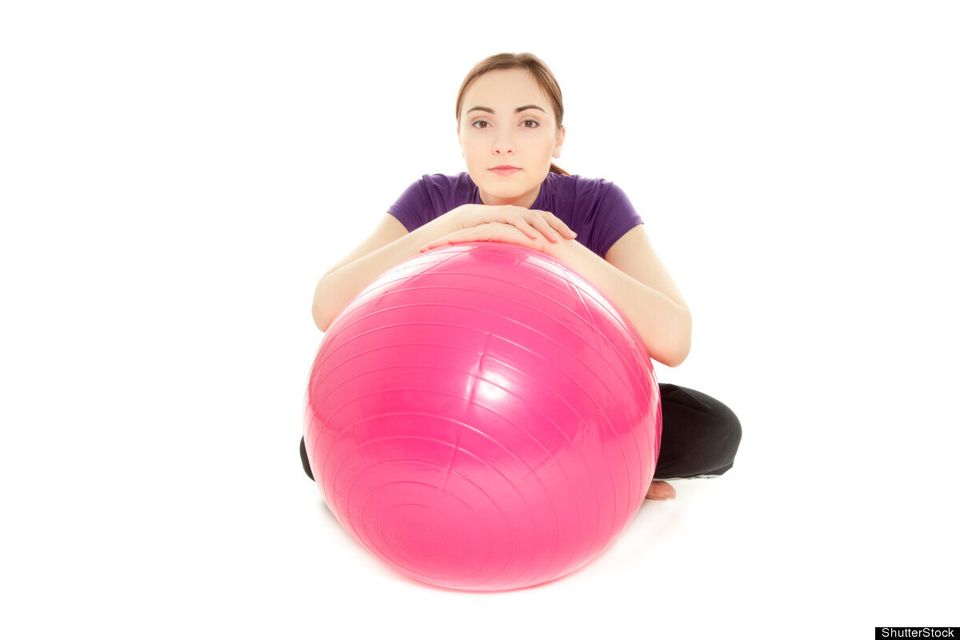
I recently attended an awesome lecture on the cervical spine, a.k.a. the neck. It reinforced how the placement of the head and neck is an important, though often ignored, element of posture.
OK, I know, the head and neck are not the most glamorous body parts to train. Getting nice legs or a toned tummy is often what motivates people to work out. I also know that importance is relative. War and poverty are certainly more pressing issues, but since I am a fitness writer I am going to take the liberty of stating that how your head sits on your body is "important." A forward head can cause a cascade of negative effects. The most tangible being pain and discomfort.
My head sits slightly further forward than it should. No one else may notice, but I do. This is mainly because my shoulders and neck are often stiff. I blame my cycling. On the bike I sit leaning forward with my head tilted upwards to see where I am going. Spending hundreds of hours in this position have negatively affected my neck. My massage therapist just shakes her head in horror when she massages it. Unfortunately, many people have heads that don't sit optimally on their body. For most people, bikes are not the culprit. Instead (what a surprise) the blame can be placed on how people sit at their computers, in front of the TV, and while in their cars. The result is the same: in my experience, most people's heads sit further forward then they should. Health professionals call this "forward head" syndrome.
BLOG CONTINUES AFTER SLIDESHOW
According to the lecture I attended, the human head is typically between 13 and 20 pounds. When 20 pounds consistently pulls your body forward, the upper back and neck have to work to compensate for the extra weight. (Imagine you had to hold twenty pounds in front of you for a prolonged period. Think how exhausted your arms would be. When your head sits forward, your upper back and neck are under a similar type of strain).
Quick side note -- the lecture that I attended was taught by Margot McKinnon at Body Harmonics in Toronto, Ontario. Margot deserves a public thank you. She taught me almost everything I know about pilates, is an unbelievable teacher and is a never-ending source of knowledge. If anyone reading this lives in Toronto and wants to become a pilates instructor, I highly suggest becoming certified through her studio, Body Harmonics.
Now back to my main point -- McKinnon said that roughly half of the human head should sit behind the spine, but this is not the case for most people. To quote Margot, the head gets "sucked forward" by various screens. Test yourself. Have someone stand looking at you from the side. Stand naturally. Don't cheat by shoving your head backwards. Get them to drop an imaginary line from your ear downwards. The line should fall roughly in-line with your shoulder.
If your head sits forward, please DON'T try to jam it backwards. That can cause different, but equally problematic postural imbalances. Postural habits take years to develop; they can't be reversed in a day. The first step in reversing forward head syndrome is to be aware of the problem. The next step is to carefully do something about it.
Suggestions:
Get up regularly from your desk. Try to move around at least once an hour. Get water. Since the body is interconnected, gentle full body stretching and movement will stimulate blood flow and help release tension in your upper back and neck. Try a GENTLE head and upper back mobilization exercise to get your blood flowing. Sit at your desk and rotate gently to the right. Use your left hand to pull gently on your right knee. Hold for 15 seconds and then switch sides.
While you are sitting at your desk, think of "orienting yourself backwards." This is Margot's term. I love it because it allows your head to move gently backwards without forcing the movement and causing other problems.
If possible, get regular massage or other body work like ART (active release therapy, a type of massage).
Try a gentle mobilization exercise I learned from Margot, called "nods." Lie on your back with feet and head on the floor. Gently nod your head without lifting it off of the mat. This is a small motion. It should not feel like work.
Lastly, strengthen your upper back and neck. The neck muscles, like all muscles, need to be strong. If you don't strengthen the neck, but strengthen the rest of your body, the neck will be your "weak link" and therefore always prone to injury. Injuries cause a negative domino, often side tracking the rest of your training. You are only as strong as your weakest link. Paul Chek has a fantastic neck strengthening exercise. Place a swiss ball against a wall. Put the back of your head against the ball (facing away from the wall). Nod your chin slightly so the ball moves along the wall. Feel like the back of your neck is lengthening slightly. This is similar to Margot's "nod," but because you are standing your neck has to work against gravity to hold the ball up. Try 10 reps. Never force the motion -- it should be small.
Don't be frustrated with yourself if it takes time before you try and implement these steps. I have known for years the havoc the bike reeks on my neck, but have not decided to take action until now. Implementing any type of health and fitness change is a process.
